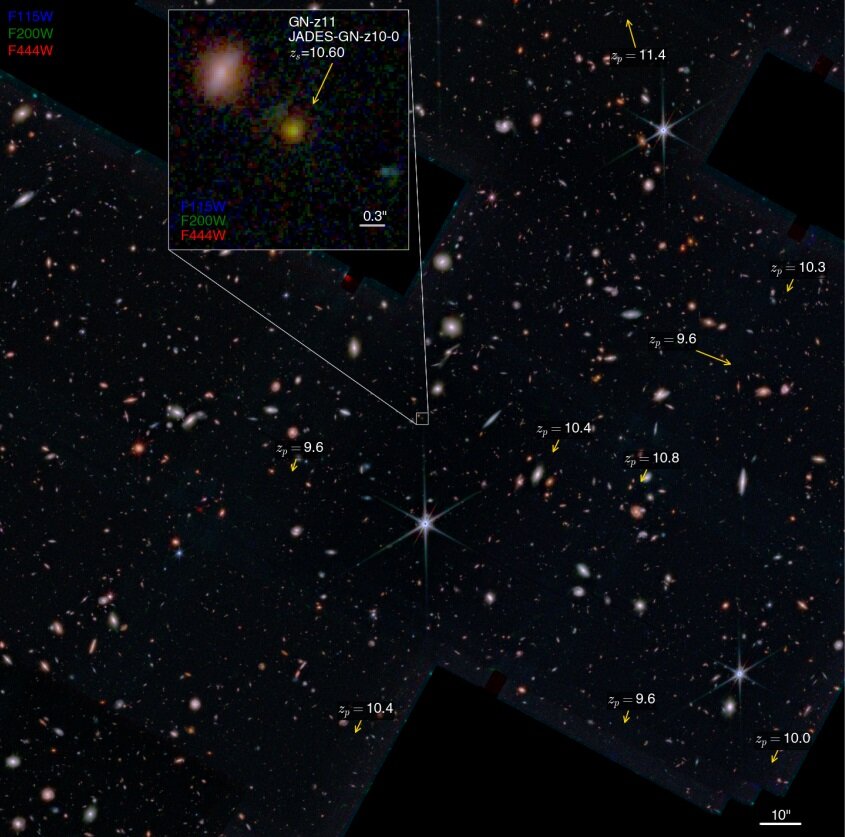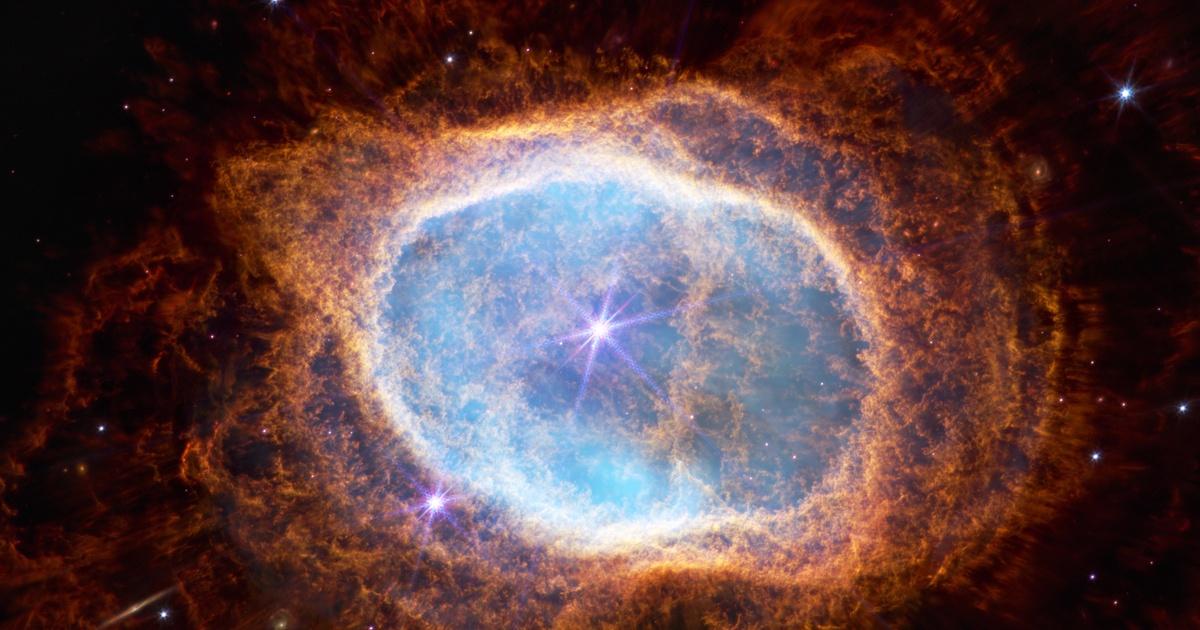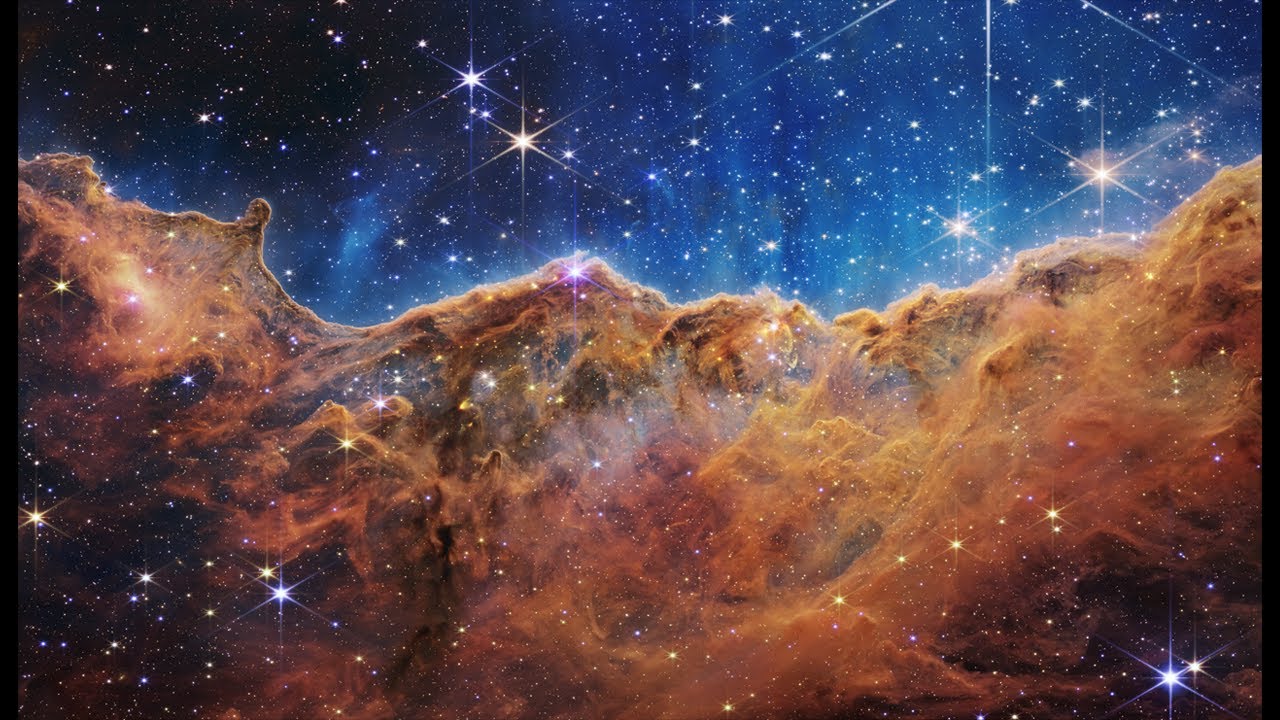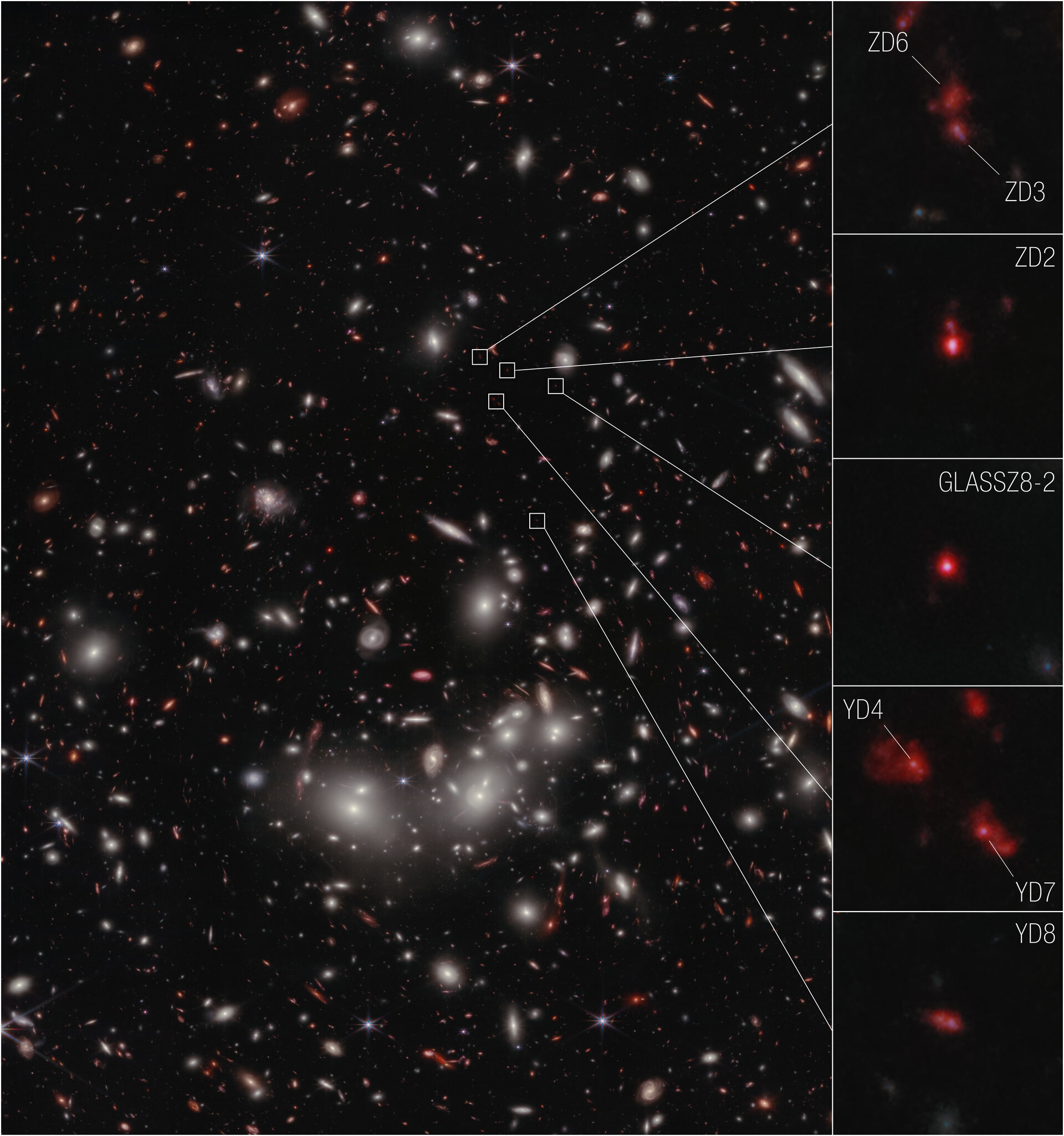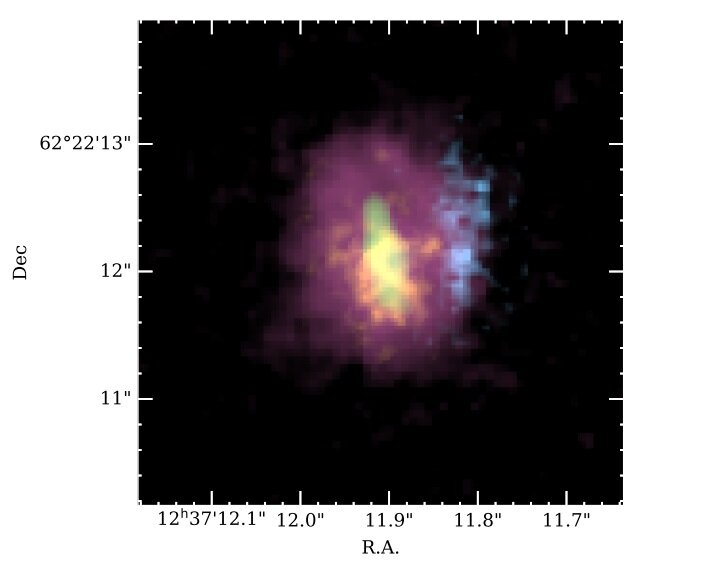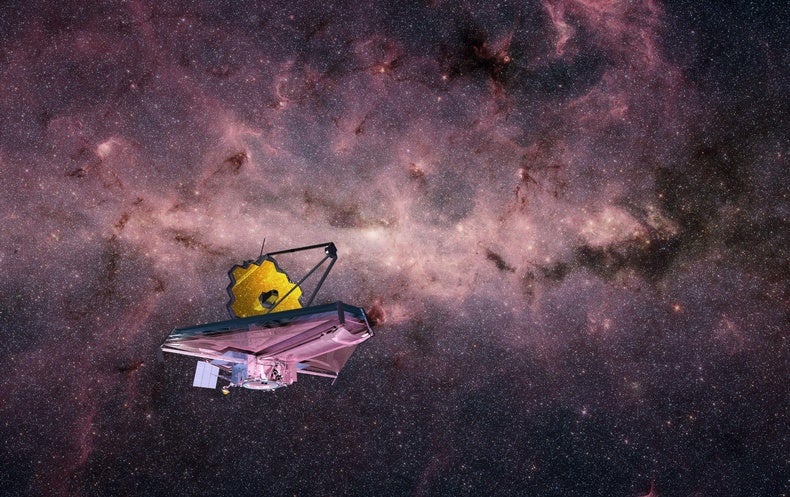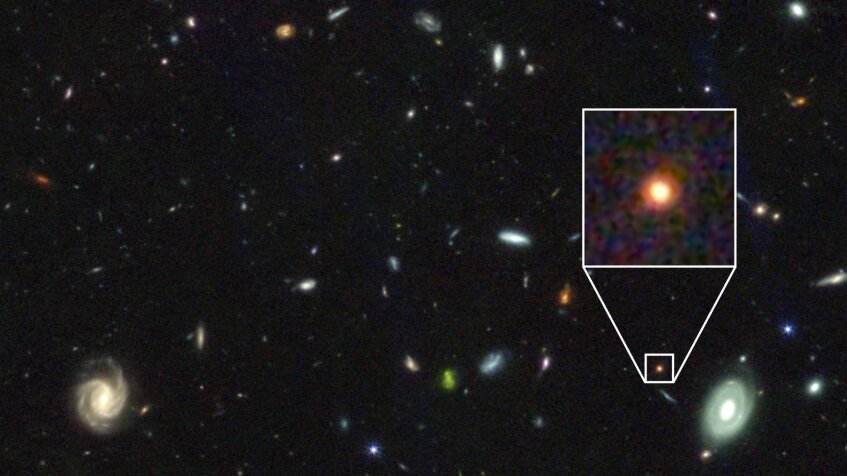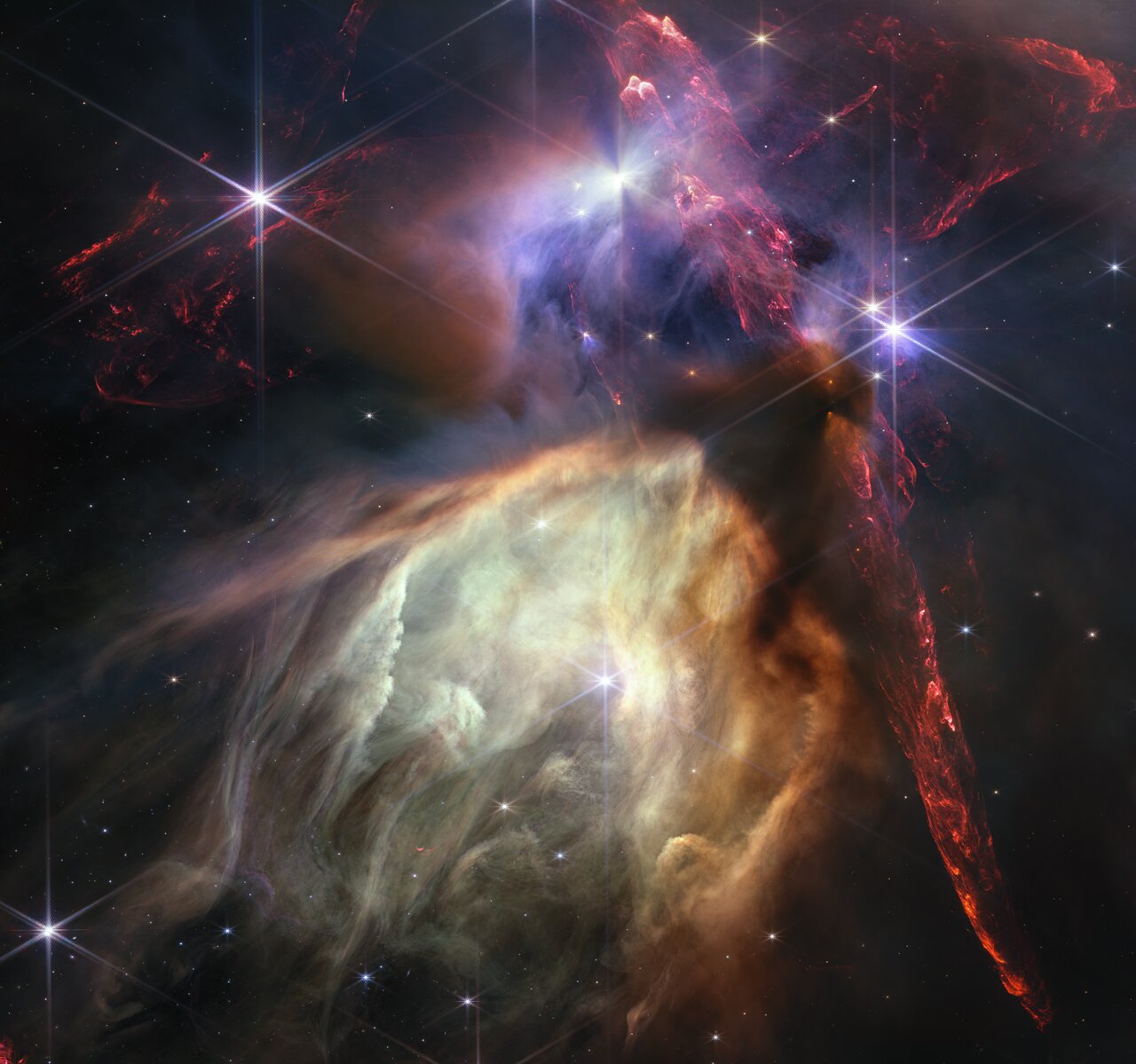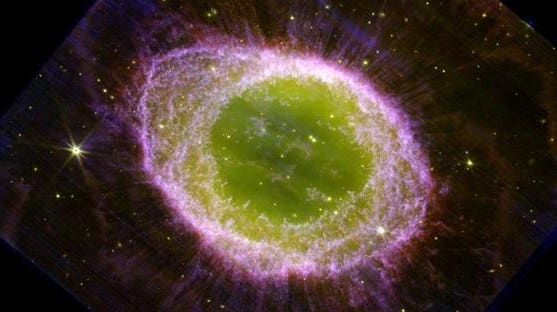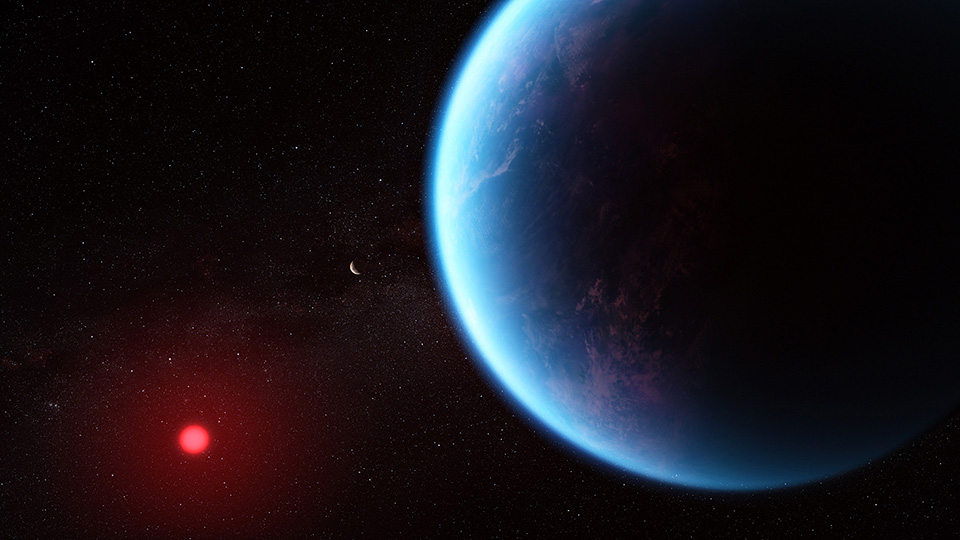- Joined
- 21 January 2015
- Messages
- 12,154
- Reaction score
- 16,362
First Observations of the Brown Dwarf HD 19467 B with JWST
We observed HD 19467 B with JWST's NIRCam in six filters spanning 2.5-4.6 μm with the Long Wavelength Bar coronagraph. The brown dwarf HD 19467 B was initially identified through a long-period trend in the radial velocity of G3V star HD 19467. HD 19467 B was subsequently detected via coronagraphic imaging and spectroscopy, and characterized as a late-T type brown dwarf with approximate temperature ∼1000K. We observed HD 19467 B as a part of the NIRCam GTO science program, demonstrating the first use of the NIRCam Long Wavelength Bar coronagraphic mask. The object was detected in all 6 filters (contrast levels of 2×10−4 to 2×10−5) at a separation of 1.6 arcsec using Angular Differential Imaging (ADI) and Synthetic Reference Differential Imaging (SynRDI). Due to a guidestar failure during acquisition of a pre-selected reference star, no reference star data was available for post-processing. However, RDI was successfully applied using synthetic Point Spread Functions (PSFs) developed from contemporaneous maps of the telescope's optical configuration. Additional radial velocity data (from Keck/HIRES) are used to constrain the orbit of HD 19467 B. Photometric data from TESS are used to constrain the properties of the host star, particularly its age. NIRCam photometry, spectra and photometry from literature, and improved stellar parameters are used in conjunction with recent spectral and evolutionary substellar models to derive physical properties for HD 19467 B. Using an age of 9.4±0.9 Gyr inferred from spectroscopy, Gaia astrometry, and TESS asteroseismology, we obtain a model-derived mass of 62±1MJ, which is consistent within 2-σ with the dynamically derived mass of 81+14−12MJ
We observed HD 19467 B with JWST's NIRCam in six filters spanning 2.5-4.6 μm with the Long Wavelength Bar coronagraph. The brown dwarf HD 19467 B was initially identified through a long-period trend in the radial velocity of G3V star HD 19467. HD 19467 B was subsequently detected via coronagraphic imaging and spectroscopy, and characterized as a late-T type brown dwarf with approximate temperature ∼1000K. We observed HD 19467 B as a part of the NIRCam GTO science program, demonstrating the first use of the NIRCam Long Wavelength Bar coronagraphic mask. The object was detected in all 6 filters (contrast levels of 2×10−4 to 2×10−5) at a separation of 1.6 arcsec using Angular Differential Imaging (ADI) and Synthetic Reference Differential Imaging (SynRDI). Due to a guidestar failure during acquisition of a pre-selected reference star, no reference star data was available for post-processing. However, RDI was successfully applied using synthetic Point Spread Functions (PSFs) developed from contemporaneous maps of the telescope's optical configuration. Additional radial velocity data (from Keck/HIRES) are used to constrain the orbit of HD 19467 B. Photometric data from TESS are used to constrain the properties of the host star, particularly its age. NIRCam photometry, spectra and photometry from literature, and improved stellar parameters are used in conjunction with recent spectral and evolutionary substellar models to derive physical properties for HD 19467 B. Using an age of 9.4±0.9 Gyr inferred from spectroscopy, Gaia astrometry, and TESS asteroseismology, we obtain a model-derived mass of 62±1MJ, which is consistent within 2-σ with the dynamically derived mass of 81+14−12MJ

